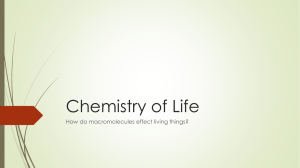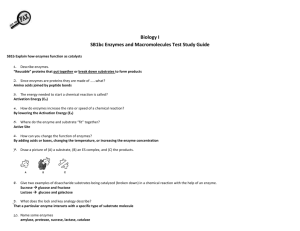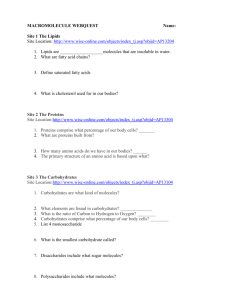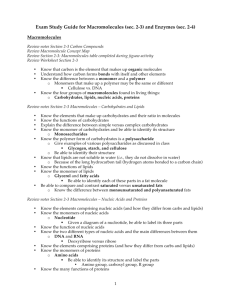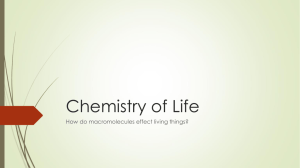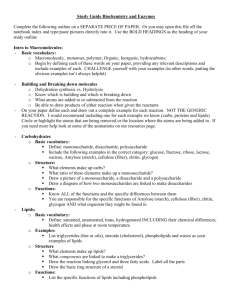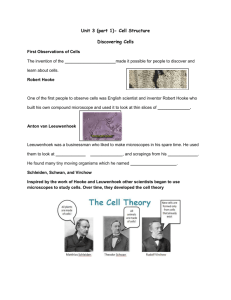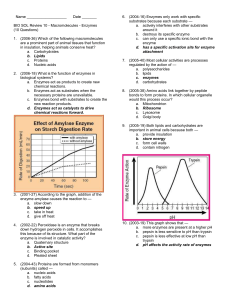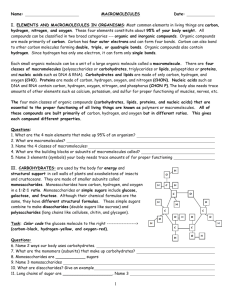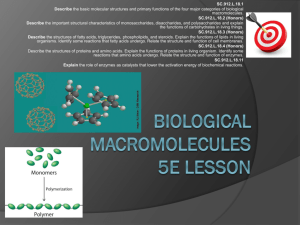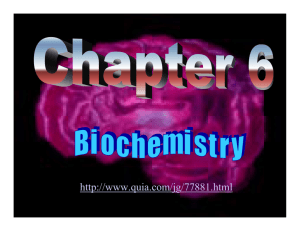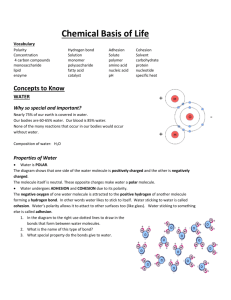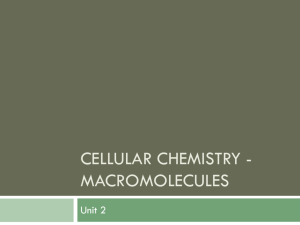Enzyme Worksheet
advertisement
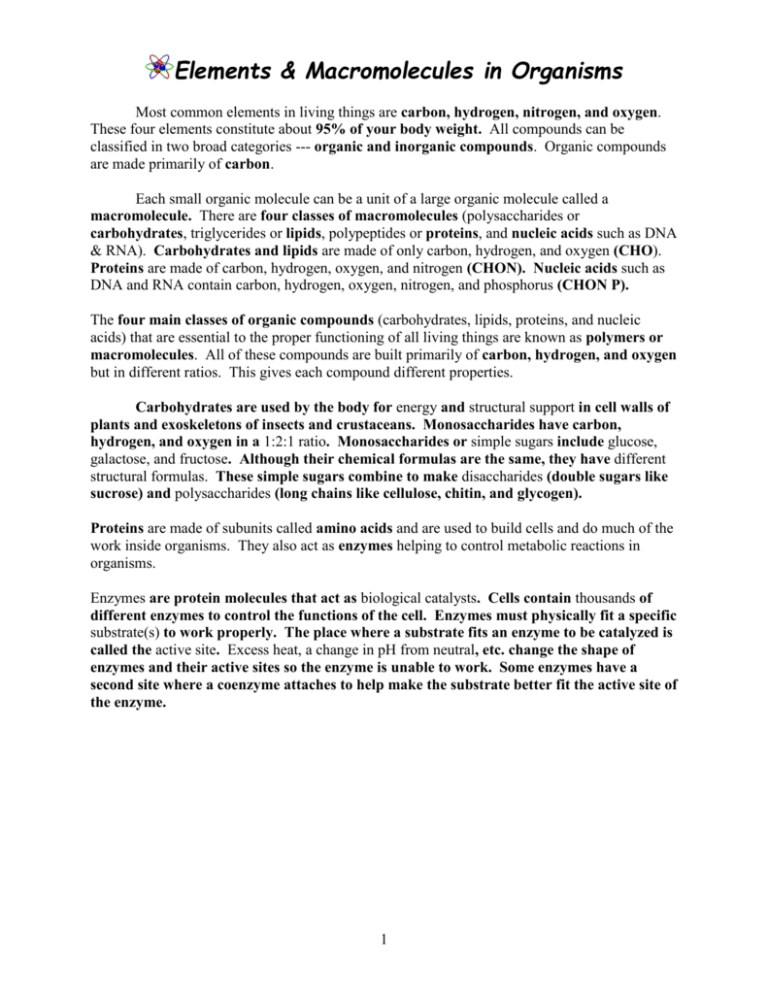
Elements & Macromolecules in Organisms Most common elements in living things are carbon, hydrogen, nitrogen, and oxygen. These four elements constitute about 95% of your body weight. All compounds can be classified in two broad categories --- organic and inorganic compounds. Organic compounds are made primarily of carbon. Each small organic molecule can be a unit of a large organic molecule called a macromolecule. There are four classes of macromolecules (polysaccharides or carbohydrates, triglycerides or lipids, polypeptides or proteins, and nucleic acids such as DNA & RNA). Carbohydrates and lipids are made of only carbon, hydrogen, and oxygen (CHO). Proteins are made of carbon, hydrogen, oxygen, and nitrogen (CHON). Nucleic acids such as DNA and RNA contain carbon, hydrogen, oxygen, nitrogen, and phosphorus (CHON P). The four main classes of organic compounds (carbohydrates, lipids, proteins, and nucleic acids) that are essential to the proper functioning of all living things are known as polymers or macromolecules. All of these compounds are built primarily of carbon, hydrogen, and oxygen but in different ratios. This gives each compound different properties. Carbohydrates are used by the body for energy and structural support in cell walls of plants and exoskeletons of insects and crustaceans. Monosaccharides have carbon, hydrogen, and oxygen in a 1:2:1 ratio. Monosaccharides or simple sugars include glucose, galactose, and fructose. Although their chemical formulas are the same, they have different structural formulas. These simple sugars combine to make disaccharides (double sugars like sucrose) and polysaccharides (long chains like cellulose, chitin, and glycogen). Proteins are made of subunits called amino acids and are used to build cells and do much of the work inside organisms. They also act as enzymes helping to control metabolic reactions in organisms. Enzymes are protein molecules that act as biological catalysts. Cells contain thousands of different enzymes to control the functions of the cell. Enzymes must physically fit a specific substrate(s) to work properly. The place where a substrate fits an enzyme to be catalyzed is called the active site. Excess heat, a change in pH from neutral, etc. change the shape of enzymes and their active sites so the enzyme is unable to work. Some enzymes have a second site where a coenzyme attaches to help make the substrate better fit the active site of the enzyme. 1 Color the enzyme purple, the substrate yellow, and the coenzyme green. Also color the active site red. Enzyme-Substrate Complex 2 Questions: 1. Name the 4 main elements that make up 95% of an organism. 2. What are macromolecules? 3. Name the 4 classes of macromolecules. 4. Give 2 examples of nucleic acids. 5. What elements make up carbohydrates & lipids (symbols)? 6. Name 2 ways your body uses carbohydrates. 7. Proteins also act as __________ in cells to control reactions. 8. Cells have ________ of enzymes to act as biological __________. 9. Enzymes have an attachment site called the __________ site for the __________ to join. 10. What is the effect of excess heat or temperature on an enzyme? 3

